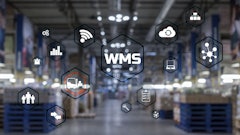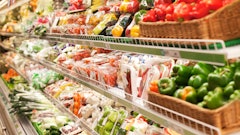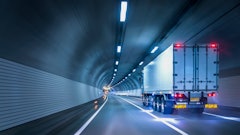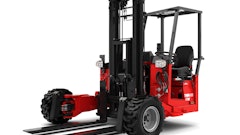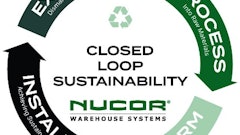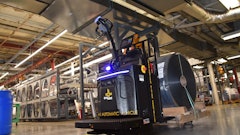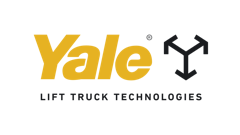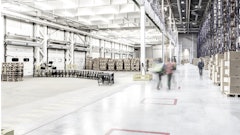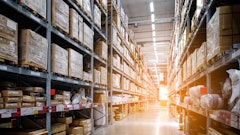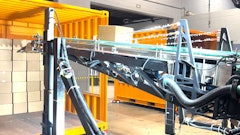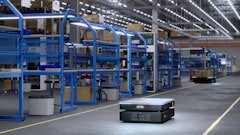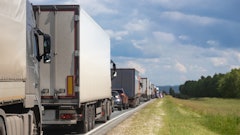
During my career covering supply chain, including five years as Editor of Supply & Demand Chain Executive magazine, I’ve seen consumers take advantage of technology to gain knowledge and demand rapid, inexpensive (sometimes free) delivery of goods. In supply chain terms, that’s called last mile—getting the product to the consumer as quickly as possible.
All of these innovations have made life easier and more efficient both for businesses and consumers. Digital content, including that gathered by the Internet of Things (IoT) is expanding exponentially. Manufacturers who have become digital are inundated with new sources of information they can manage, analyze and use to not only increase business, but satisfy customer requirements. It’s win-win.
So, when I began working in the water space with GlobalWaterWorks I was surprised to discover that our water utilities are expected to deposit around 80 gallons at the door of every individual. That’s every day. No questions asked or answered. No data on how much actually is used. No data showing, perhaps, leakage or tainted water. Nothing.
Here are just a few stats from the U.S. Environmental Protection Agency (EPA):
• Each American uses an average of 88 gallons of water per day in the home
• The average family can waste 180 gallons per week—9,400 gallons annually—from household leaks, which waste around 900 billion gallons of water each year
• Letting the faucet run for five minutes while washing dishes can waste 10 gallons of water and uses enough energy to power a 60-watt lightbulb for 18 hours
• Turning off the tap while brushing your teeth can save eight gallons of water per day
And that’s just in the United States. The water issue is global. According to United Nations projections, the global demand for fresh water will exceed supply by 40 percent in 2030, thanks to climate change, population growth and human activity.
A United Kingdom-based company called Save Water Save Money (SWSM) has been using technology to do something about water waste for a decade. Launched by founder and CEO Tim Robertson, SWSM has worked with 90% of the UK’s water companies since its inception in 2007. SWSM also distributes more than 1,000 water-saving products daily—more than 3.5 million to in excess of 1.5 million customers. That has saved the UK 51 billion liters of water (13.473 billion gallons).
“Big data allows us to understand how customers value water and how to translate that value into better supply and demand strategies,” Robertson says. “Water companies receive data that includes geographic location, water and energy consumption by appliance, person and household and water and energy savings possible by appliance, person and household.”
For the Consumer
SWSM’s most recent advance—already active in the UK and expected to roll out in the United States during the second quarter—is called the aqKWa Savings Engine. It’s an interactive, personalized online tool to help save energy, water and money. It takes consumers about five minutes to fill out a form that can provide benefits such as access to free water saving devices, details on water usage and coaching to reduce water consumption. More than 200,000 people already use the portal.
The portal also overcomes the carbon-copy messaging that utilities have sent out for years and often are ignored. Instead, they receive targeted advice and messaging that addresses their specific water use—good and bad.
For the Utility
Water companies using the portal receive a large amount of customer-specific data as well as discovering conservation and efficiency opportunities they otherwise might not have found. Information includes:
• The number of registered users
• How much water customers believe they use by appliance – without the need to invest in smart meters or analyze complex data
• What appliances your customers have, and how they consume water
• Average potential savings per household – plus the actual savings being made
• Occupancy per household
• Percentage of households with leaking appliances and pipework
• Customer contact details and other data such as the size of their property, gardening habits, properties with pools and much more
Save Water Save Money has gained immeasurable insights and experience in the water efficiency market. Crucially, water efficiency is the driver to engage customers, which can benefit all areas of the water industry, including finance, operations, marketing, customer service and demand management.
In finance, ROI across all areas of business can improve as ancillary revenue streams are opened. Operations will benefit from cost reduction and streamlining by shifting customers to online billing. Marketing via aqKWa can be low-cost and highly targeted. Customer service can be improved as expectations are managed via the portal, increasing constructive input and reducing irritated customers. Finally, targeted low-cost, ongoing water efficiency initiatives and activities will give the company better insight into demand management.
The aqKWa Savings Engine is held on Save Water Save Money’s servers. This allows water companies ease and speed of set up – without drawing on internal resources.
The aqKWa app will be launched throughout the U.S. in the second quarter with the National Rural Water Association (NRWA)—the nation’s largest water and wastewater utility membership association—offering it to its 31,000 members and their customers.







